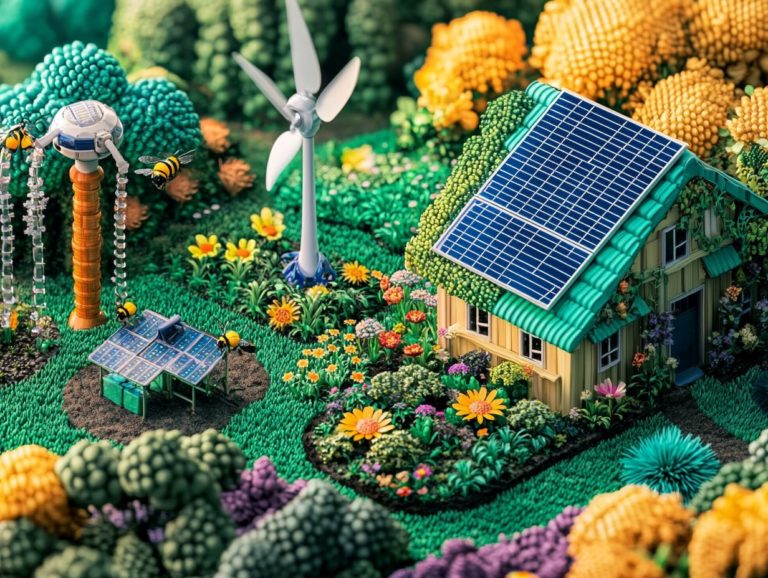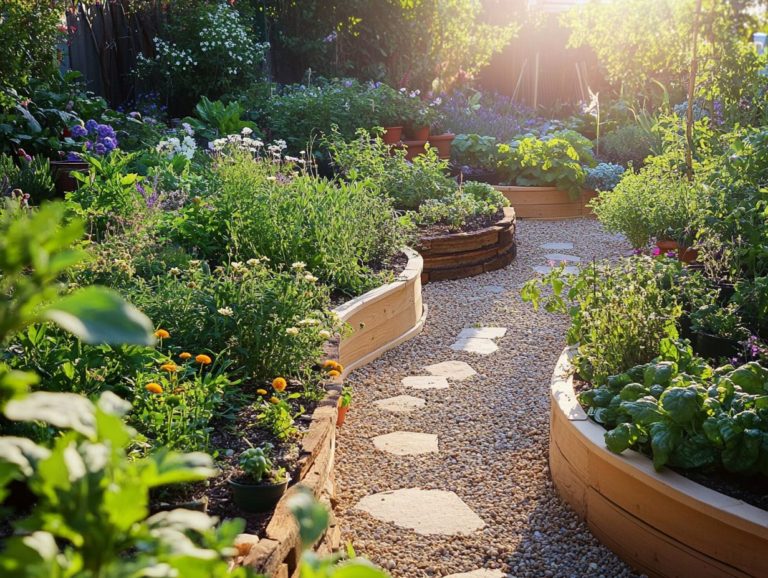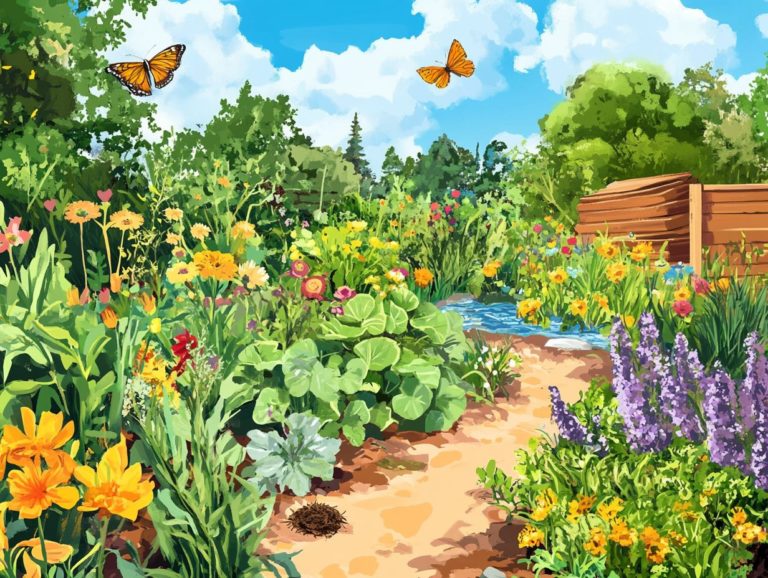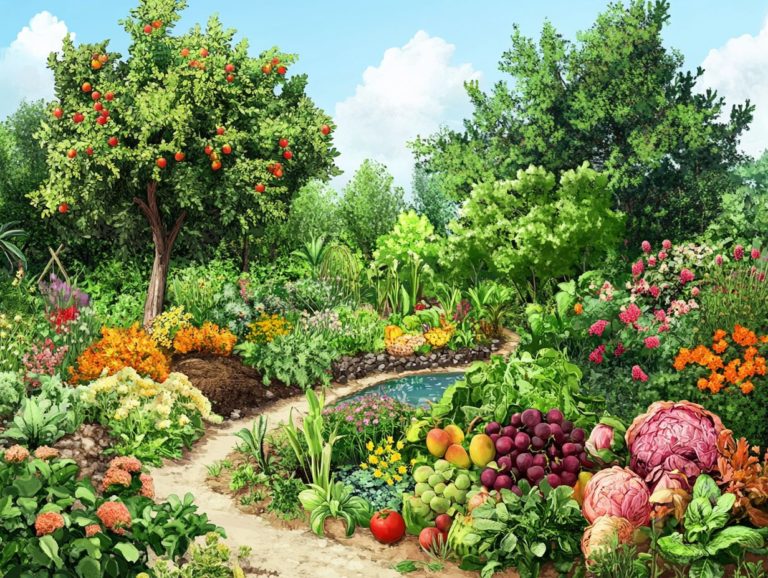Top 5 Permaculture Design Strategies for Beginners
Permaculture is not merely a gardening technique; it s a complete way to create eco-friendly spaces that enrich both the environment and the community.
If you’re a beginner eager to embark on this rewarding journey, grasping essential design strategies can truly make a difference. This article delves into five foundational principles: starting small, observing your surroundings, utilizing renewable resources, embracing diversity, and continually refining your design.
As you read on, you ll uncover the significance of permaculture, its myriad benefits, common challenges you might face, and practical tips for weaving these practices into your daily life.
Are you ready to transform your space into a thriving, sustainable ecosystem? Join us and transform your garden today!
Contents
- Key Takeaways:
- 1. Start Small and Simple
- 2. Observe and Interact with Your Surroundings
- 3. Use Renewable and Sustainable Resources
- 4. Embrace Diversity and Interconnectedness
- 5. Continually Evaluate and Improve Your Design
- What Is Permaculture and Why Is It Important?
- Frequently Asked Questions
- What are the top 5 permaculture design strategies for beginners in environmentally conscious gardening?
- Why is stacking functions important in permaculture design?
- How does zoning work in permaculture design?
- Why is it important to incorporate natural patterns in permaculture design?
- What are some ways to create microclimates in permaculture design?
- How does companion planting benefit permaculture design?
Key Takeaways:
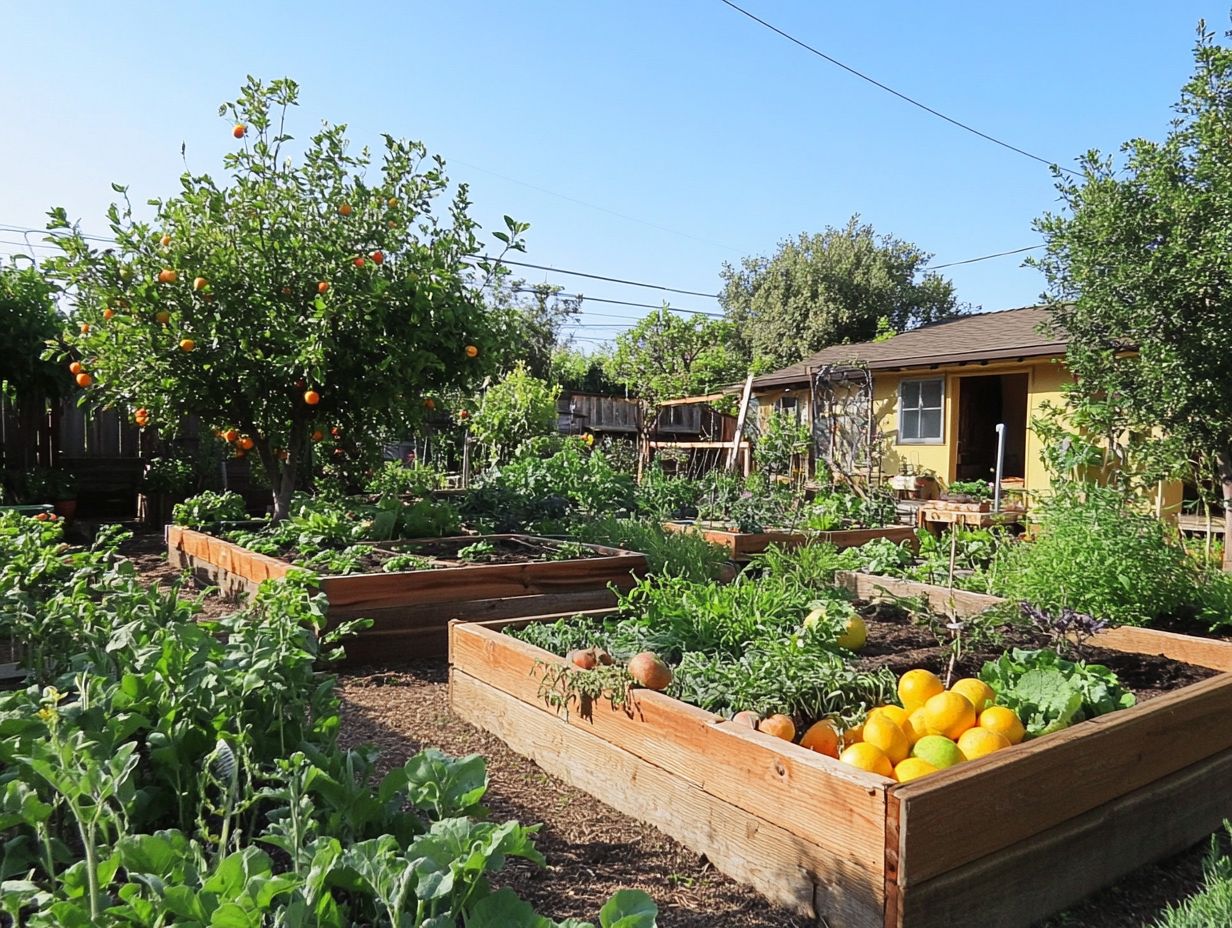
- Start small and simple to avoid feeling overwhelmed.
- Observe and interact with your surroundings to better understand your environment and its needs.
- Use renewable and sustainable resources to minimize negative impacts on the environment.
1. Start Small and Simple
Starting small and simple is a key strategy in gardening, especially if you’re a beginner eager to dive into the joys of backyard gardening. This approach can lead to a sustainable and fulfilling experience in organic gardening.
By concentrating on manageable projects, you can gradually expand your gardening knowledge and techniques while ensuring the health of your soil and plant selection.
Engaging in small-scale endeavors, like container gardens or raised beds, simplifies the process. It presents an excellent opportunity to learn essential skills such as seasonal planting and identifying microclimates in your own yard. This incremental approach allows you to discover your preferences and understand the unique conditions that influence plant growth.
Community gardens can be an invaluable resource. They provide both guidance and support, creating a sense of camaraderie among gardeners. It s easier for you to experiment and connect with seasoned growers who are willing to share their insights and experiences.
2. Observe and Interact with Your Surroundings
Observing and interacting with your surroundings is vital for crafting an effective garden design. This practice helps you understand the unique microclimates, pollinator activity, and existing plant life that can enrich the diverse ecosystems within your project.
By carefully tracking the sun’s path throughout the day and noting how water drains across the landscape, you gain essential insights into the environmental conditions that will dictate your plants’ health and growth.
Paying attention to local wildlife can also reveal which species are integral to maintaining ecological balance. For example, understanding the pollinators in your area can significantly influence your choices regarding plant selection and companion planting, which is when you grow different plants together for mutual benefit.
This informed approach culminates in a holistic design that not only supports biodiversity but also minimizes your environmental impact. The result is a thriving, sustainable garden that nourishes both the flora and fauna surrounding it.
3. Use Renewable and Sustainable Resources
Utilizing renewable and sustainable resources is essential in sustainable gardening. Embracing practices such as composting, no-till gardening, and organic methods enhances soil health while significantly reducing your reliance on chemical inputs.
Incorporating recycled materials into your garden beds minimizes waste and offers a unique, personalized gardening experience. Consider using old wooden pallets, bricks, or even discarded tires to create structure while supporting eco-friendly practices.
Composting plays a vital role in enriching soil health. By recycling kitchen scraps and yard waste into nutrient-dense matter, you enhance microbial activity in the soil, fostering robust plant growth.
Engaging in educational initiatives that emphasize these strategies equips you with the knowledge to implement efficient practices. This not only cultivates a deeper connection to your environment but also promotes a sustainable way of living that benefits both you and the planet.
4. Embrace Diversity and Interconnectedness
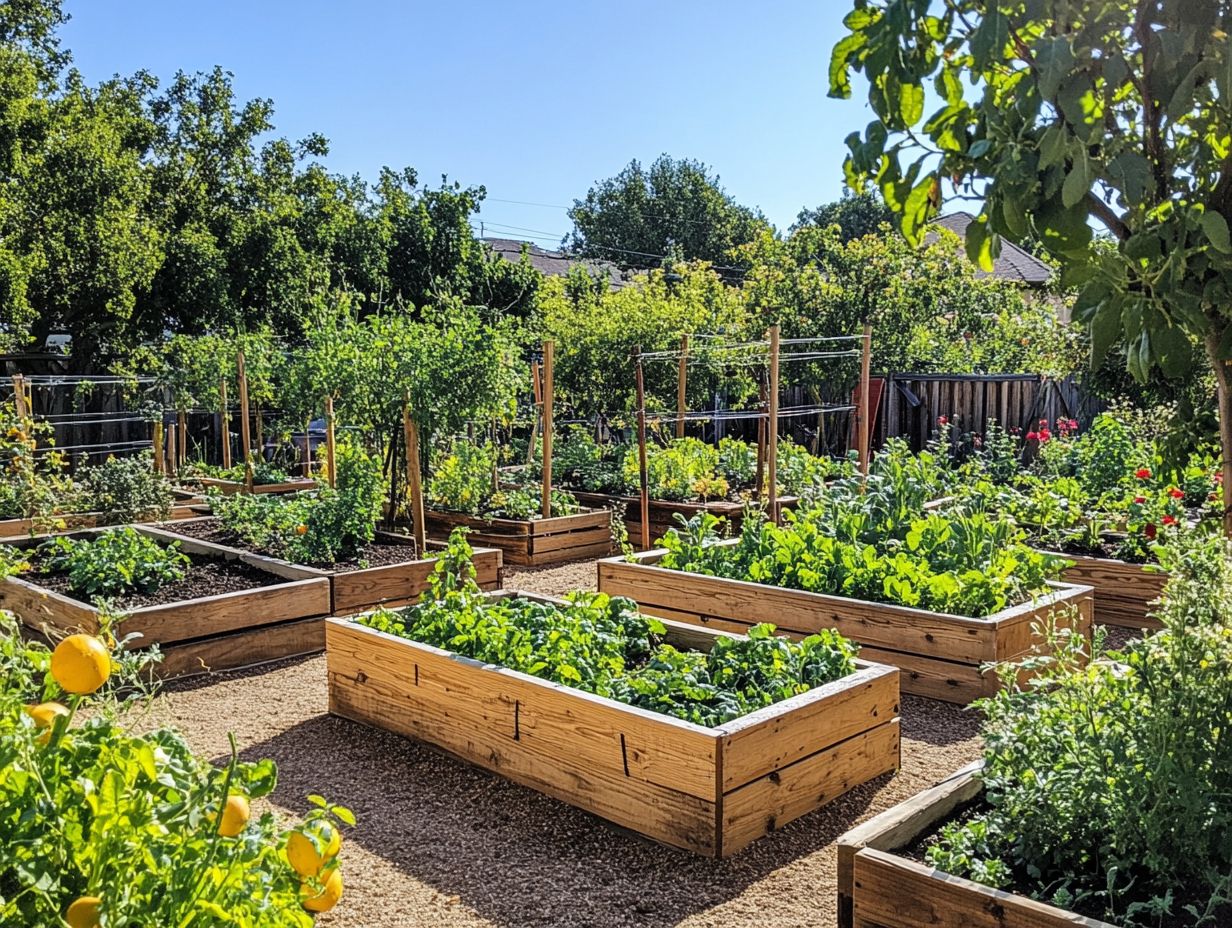
Embracing diversity and interconnectedness in gardening is essential for fostering biodiversity. This enhances ecosystem resilience and offers a wealth of environmental benefits. Techniques like companion planting and incorporating native plants are just the beginning.
By cultivating various species instead of monocultures, you create a habitat that supports beneficial insects and pollinators. This significantly boosts the overall health of your garden. Integrating permaculture principles allows you to adopt sustainable practices such as rainwater harvesting and crop rotation. These practices conserve resources while promoting soil regeneration.
For example, planting native flowers draws in local butterflies and bees. It also enhances soil structure, making nutrients more accessible. This holistic approach enriches your landscape and contributes to thriving ecosystems. Ultimately, it plays a vital role in maintaining biodiversity.
5. Continually Evaluate and Improve Your Design
Evaluating and enhancing your garden design is crucial for fostering resilience and adapting to climate influences. Keep a garden journal to capture your experiences and learn from each season!
By recording both your successes and setbacks, you ll understand which plants thrive under specific conditions. Employ observation techniques track weather patterns, pest activity, and soil health to gain insights that guide your gardening strategies. This reflective practice boosts the effectiveness of your techniques and deepens your connection with the garden.
Over time, these observations empower you to make more informed decisions, ensuring your garden flourishes despite climate challenges.
What Is Permaculture and Why Is It Important?
Permaculture offers a holistic approach to ecological gardening. It emphasizes sustainable practices and the intelligent design of agricultural systems. Spearheaded by luminaries like Bill Mollison and P.A. Yeoman, it enhances biodiversity and promotes sustainable food production within your community.
By focusing on natural ecosystems, permaculture aims to create balanced agricultural systems that yield food while restoring and nurturing the environment. This philosophy values diversity, enhances soil health, and conserves water. Together, these principles bolster resilience against climate change and resource depletion.
Its focus on community development encourages local food production and strengthens social ties. Embracing these practices contributes to cultivating a healthier planet, highlighting the connections between ecology, agriculture, and well-being.
What Are the Key Principles of Permaculture?
The key principles of permaculture invite you to create integrated systems that boost resilience, embrace sustainable gardening practices, and effectively use renewable resources. This enriches biodiversity within ecosystems.
Applying these foundational concepts helps cultivate environments that resonate with the rhythms of natural ecosystems. For instance, establishing diverse plant communities optimizes your space and attracts beneficial insects, natural allies in pest control.
Creating microclimates through strategic tree planting or windbreaks shields sensitive crops and boosts overall yield. By embracing these techniques, you achieve a harmonious balance between nature and cultivation, ensuring every element serves a purpose and contributes to a vibrant garden ecosystem.
How Can Permaculture Benefit the Environment and Community?
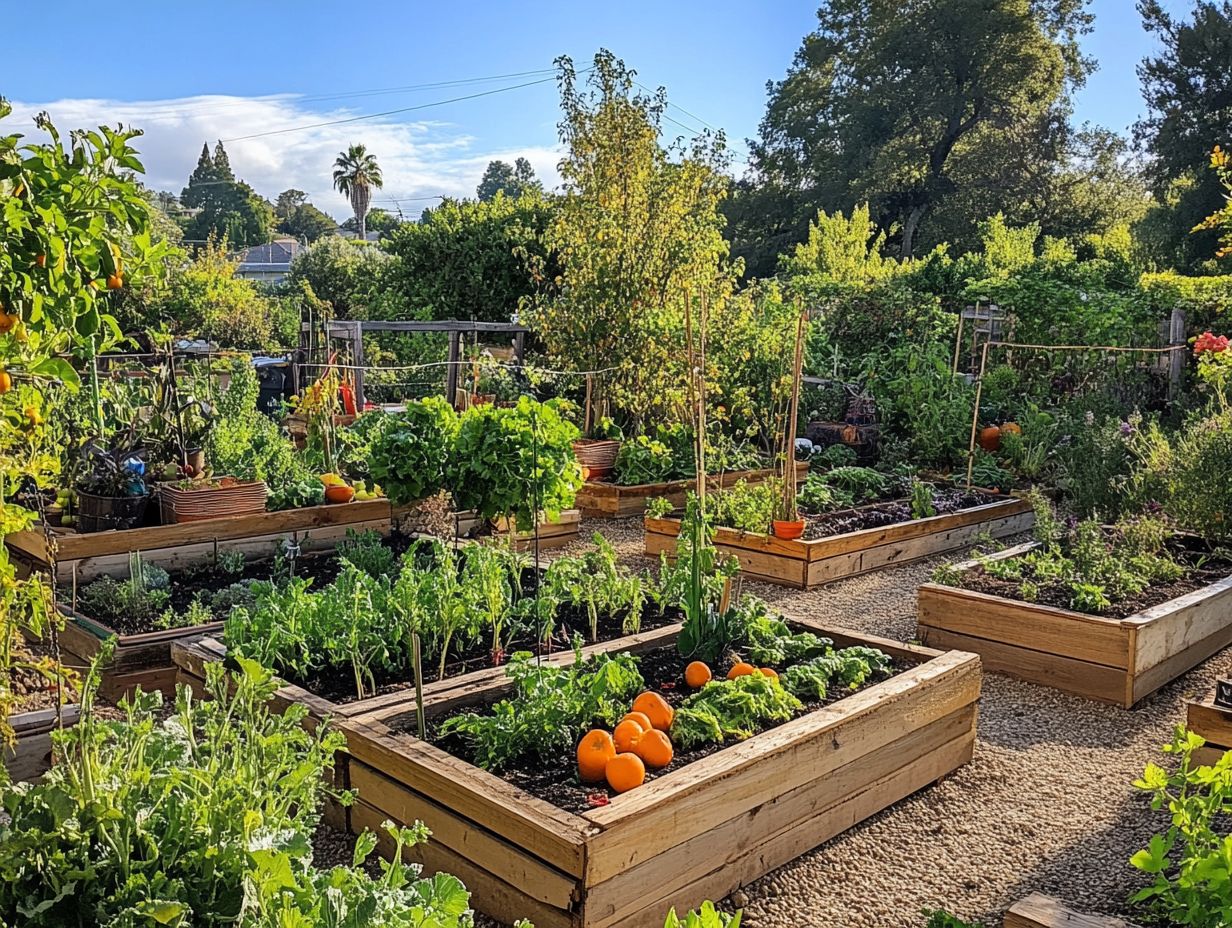
Permaculture offers profound benefits for both the environment and communities. Its sustainable practices create a positive environmental impact by enhancing biodiversity and improving food production systems.
For instance, a permaculture farm in the heart of Tasmania transformed an arid landscape into a vibrant oasis. By using techniques like contour farming (planting along the slope of the land to reduce erosion) and companion planting (growing different plants together for mutual benefit), it restored soil health and attracted local wildlife. This demonstrates how these methods can invigorate ecosystems.
In urban areas such as Melbourne, community gardens based on permaculture principles have become social hubs. Neighbors collaborate on food cultivation and share insights on sustainable practices.
These examples illustrate that permaculture goes beyond creating sustainable food systems; it enriches communities and fosters resilience in the face of ongoing environmental challenges.
What Are the Common Challenges for Beginners in Permaculture?
As a beginner in permaculture, you might encounter common challenges like understanding gardening methods, managing soil health, and honing your observation skills to adapt your methods to your garden’s unique conditions.
These obstacles can feel daunting, especially when you re striving to implement sustainable practices that enhance biodiversity and boost soil vitality. To navigate these hurdles, consider participating in local permaculture workshops or joining online forums to share experiences and gain insights from seasoned practitioners.
Dive into beginner-friendly books today! They unlock essential concepts and kickstart your journey. You can also tap into resources like local gardening clubs and community-supported agriculture programs to connect with mentors who offer tailored guidance for your specific environment.
How Can You Incorporate Permaculture into Your Everyday Life?
Incorporating permaculture into your daily life means embracing sustainable gardening methods, holistic design principles, and engaging in community gardens. This approach deepens your connection with nature and promotes organic practices.
To seamlessly integrate these principles, consider starting with a small garden in your backyard or a few pots on your balcony. This personal oasis offers a serene escape and provides invaluable hands-on experience. By utilizing compost, you enrich your soil while reducing waste an impactful habit worth cultivating.
Participating in local gardening initiatives enhances your knowledge and skills while connecting you with fellow enthusiasts who share your passion for sustainability.
Community support is essential in this journey, offering valuable resources, motivation, and a shared vision for an environmentally conscious lifestyle.
Want to Learn More About Permaculture?
You ll find a wealth of resources to deepen your understanding of permaculture. From insightful books by Bill Mollison and P.A. Yeomans to hands-on workshops and local community gardens, there are plenty of avenues for immersive education.
If you prefer learning from home, numerous online courses cater to various skill levels and interests. Many local workshops are organized to foster collaboration and practical skills, giving you a chance to gain invaluable experience in diverse settings. Community programs also play a pivotal role, offering events and activities that promote sustainable practices.
It’s wise to connect with local permaculture groups or organizations, as they often serve as essential hubs for networking, resource sharing, and ongoing education. Engaging with these communities can significantly enhance your journey into the world of permaculture.
Frequently Asked Questions
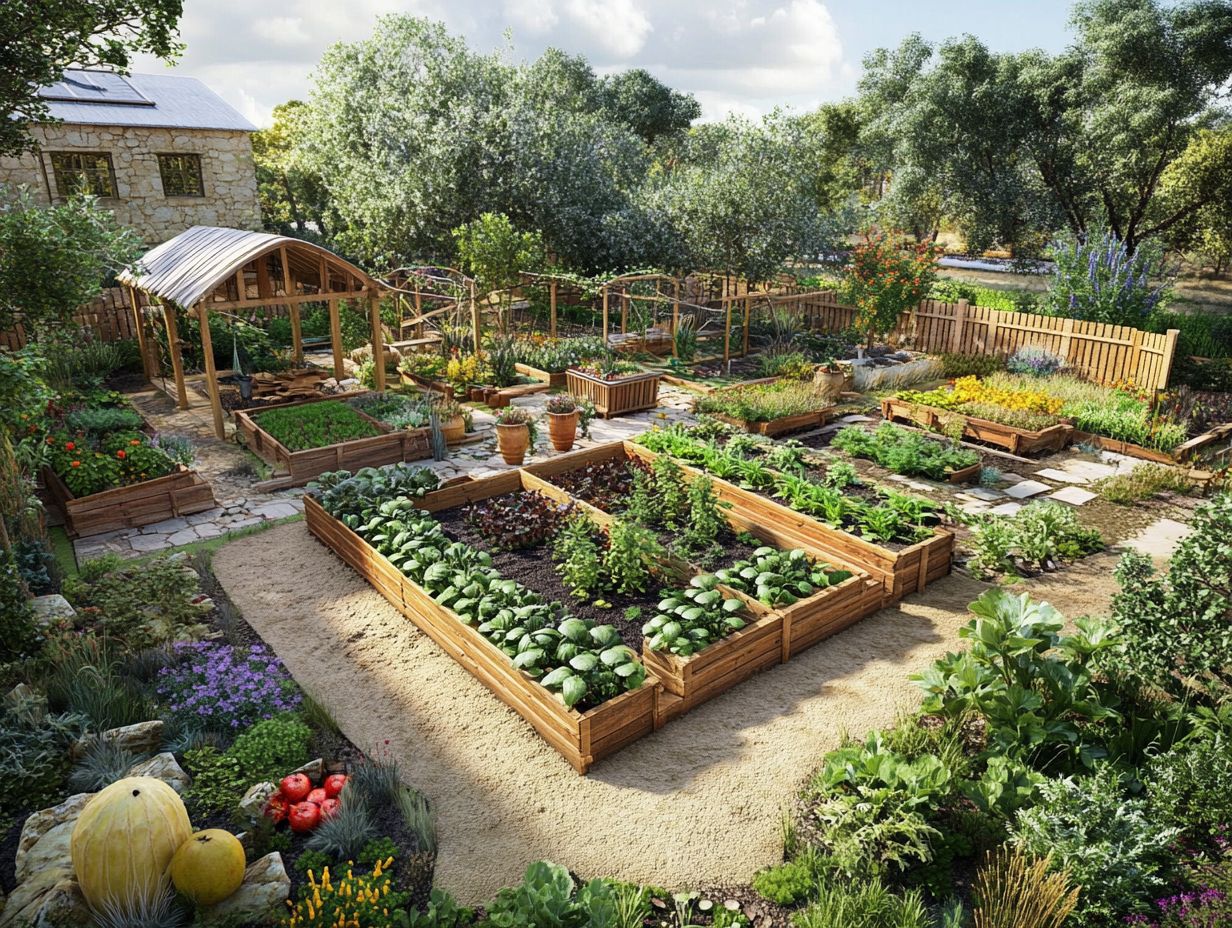
What are the top 5 permaculture design strategies for beginners in environmentally conscious gardening?
Here are the top 5 principles for effective permaculture design strategies for beginners: stacking functions, zoning, using natural patterns, creating microclimates, and companion planting.
Why is stacking functions important in permaculture design?
Stacking functions maximizes efficiency. It allows you to use one element in multiple ways, which is perfect for small spaces!
How does zoning work in permaculture design?
Zoning organizes your garden into areas based on how often you use them. This saves time and energy.
Why is it important to incorporate natural patterns in permaculture design?
Natural patterns help you work with the environment. This leads to more sustainable and resilient systems.
What are some ways to create microclimates in permaculture design?
Create microclimates by adding windbreaks or water features. You can also place trees and plants strategically to provide shade or shelter!
How does companion planting benefit permaculture design?
Companion planting is all about pairing plants that support each other. This enhances growth and keeps pests away, promoting healthier ecosystems!

